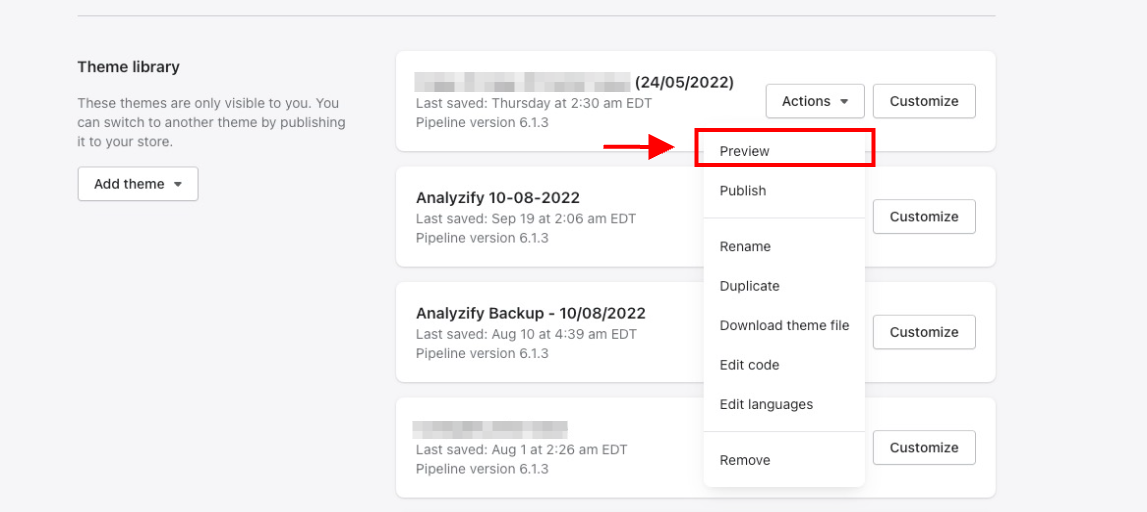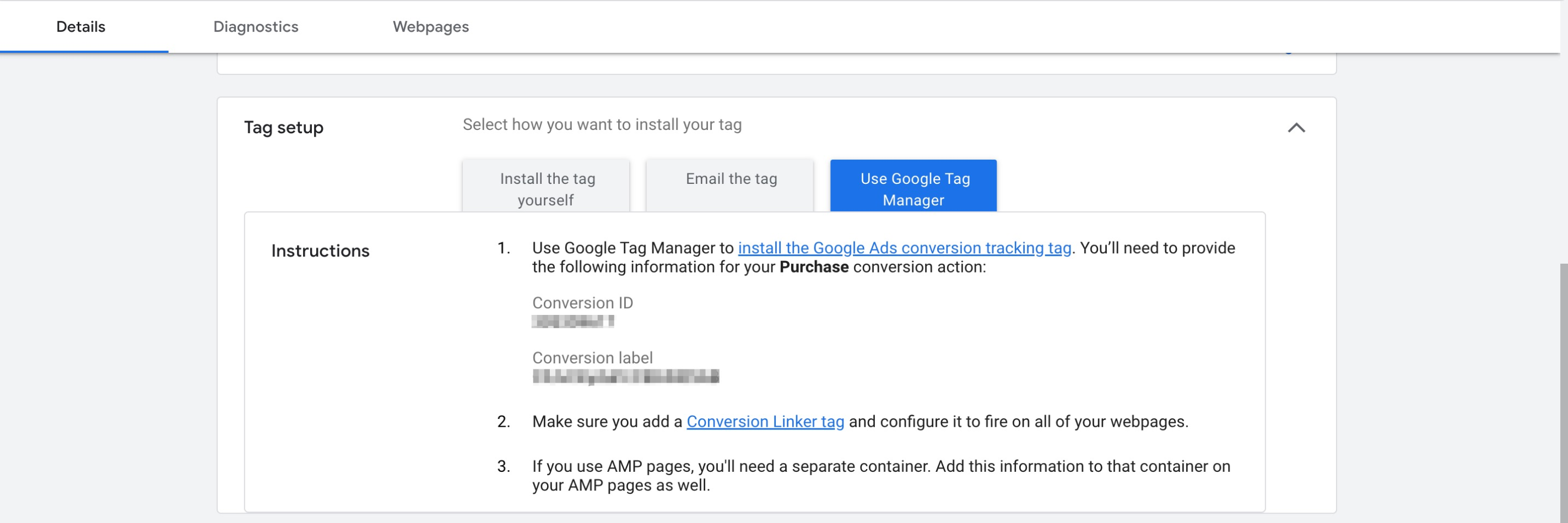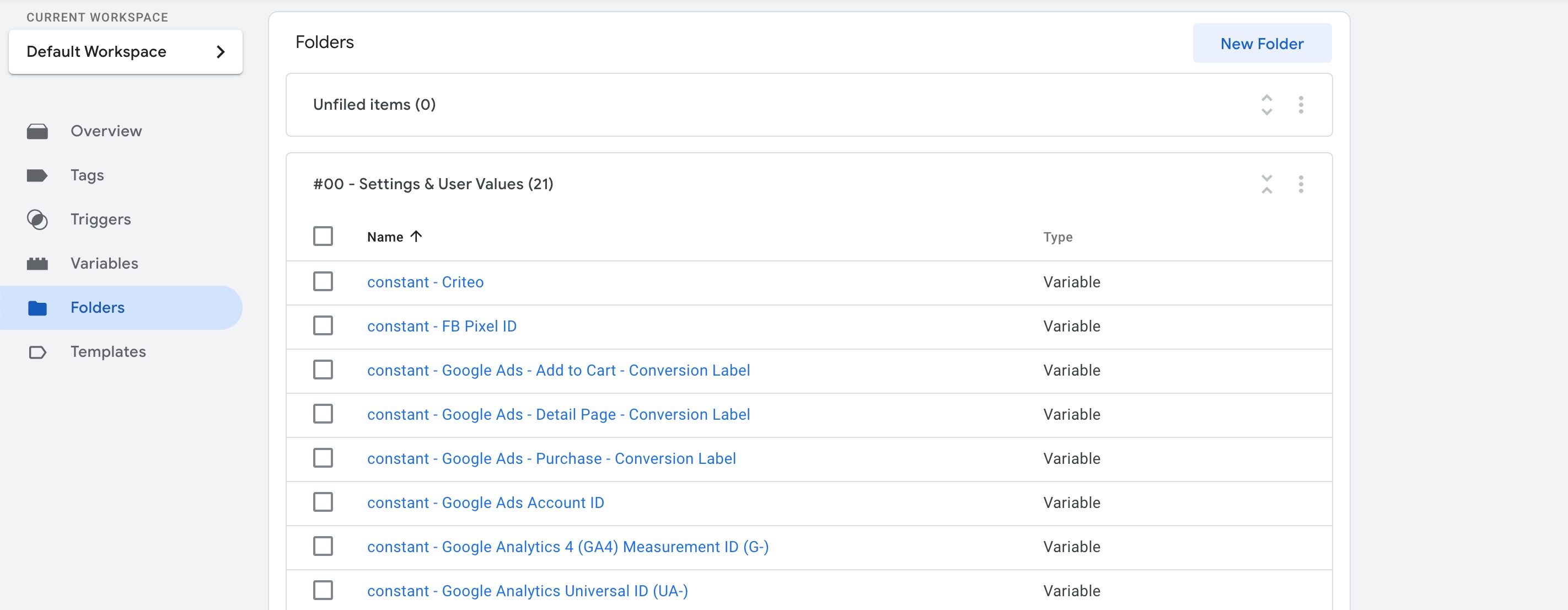The DIY setup requires a little bit of extra care as there are a couple of actions you need to take in order to have a flawless analytics experience. Here are the most important points you should consider when executing your DIY setup.
Beginning of the Setup
1. Create New Google Ads Conversion / Action:
We recommend that you should add a new conversion for Google Ads, instead of the existing purchase conversion, and continue with the setup using that new conversion label.
If there are two purchase conversions, you should set one as the primary and the other as secondary because having two primary conversions causes duplicates of conversions.
You can check out the Create a New Conversion article to set up a new conversion.
2. Native Integrations for Facebook and Other Pixels:
We recommend that the Facebook Pixel integration remain native. If you are not satisfied with native integrations, you can use our integrations. Here, keep in mind that you need to uninstall the native apps. Otherwise, you may encounter duplicated counts.
Setup Process
1. Work on a Duplicated Theme:
We recommend that you always execute the integrations on a duplicated theme. After completing the setup, we highly advise that you check your theme by previewing it on Google Tag Manager. Also note that if you try to test with a live theme, your tags will not work, as you set up the codes into a duplicated theme.
Here is how you can get the preview link of the duplicated theme:

2. Be Careful About the Google Ads Constants:
In the setup steps, we ask you about some parameters for Google Ads integration. One of the most common mistakes made here is that the account number is generally written in the Account ID field. Instead, the conversion ID in the conversion settings should be written there. You can find the right ones here: Find Your Google Ads Conversion ID and Label .

3. Update Your Integrations' IDs
If you're using Analyzify Datalayer integration, you need to update your integrations' IDs manually, as these details are not provided in the Google Tag Manager Container. Also, after you complete the installation, you can change these variables from your Google Tag Manager container at any time.
You can check out our Update Your Integrations' IDs article to change the user values on your Google Tag Manager account.

4. Other Tools & Double Counting
Another common challenge encountered after the setup process is data duplication, often due to double counting. This issue typically arises when other tracking tools are used alongside Analyzify, with the same IDs or conversion labels applied across platforms. To prevent this, we recommend using distinct GA4 properties, conversion labels, and similar identifiers for each tool. This ensures accurate and reliable data attribution, eliminating discrepancies caused by overlap.
Validation and Further Issues
1. Google Analytics 4 Validation:
Congrats! You have completed the installation and you are now in the validation phase. At this point, you may not see any data flowing to Google Analytics 4, because it takes 24 hours for it to be displayed.
In the meantime, you can test and debug your integration using our comprehensive How to Debug Analyzify Setup guide. This will help ensure your setup is working as expected and allow you to resolve any potential issues proactively.
2. What if the Add-to-Cart Event is not Working:
This is the most common validation error we have encountered so far, because the ‘add_to_cart’ and ‘remove_from_cart’ events do not work from time to time. Do not hesitate to contact us in such cases as our technical team will do their best to resolve your problem as quickly as possible. Also our Add-to-Cart Event Not Working as Expected article can help you to learn how to solve this issue.
3. What if You Want to Change Your Theme:
You may decide to switch to a new theme after some time. If so, it’s important to note that you should also enable Analyzify on your new theme. You can take a look at the Theme Updates & Changes - Set up Analyzify on a New Theme article to learn how to activate Analyzify into your new theme within minutes.
More Tips about Setup
1. If you wish to check more details about how to set up Analyzify by yourself you can check our Do-It-Yourself Setup Guide.
2. Google Ads Account Tutorials can help you configure your Google Ads in a better way.
3. You can validate your GA4 data by debugging or checking data from the panel. In our GA4 & Shopify Data Validation article, you can learn how to check it without the debug mode.
